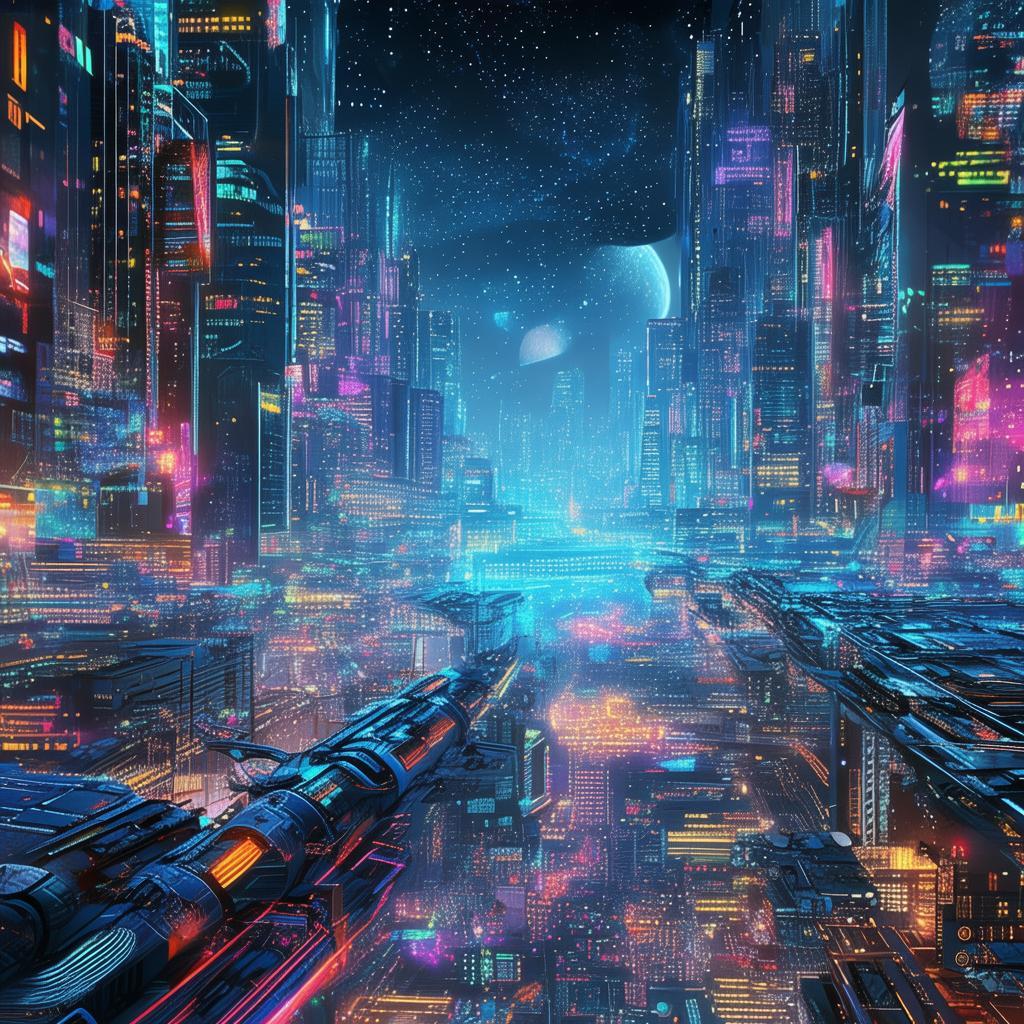Chronicles of the Tangled Weave: The Paradox of the Timeless Tapestry
In the year 2147, the world was a marvel of technology and magic, a fusion of the old and the new. The Time-Traveling Tapestries, a series of ancient artifacts, had been discovered in the ruins of a long-lost civilization. These tapestries were said to have the power to transport their weavers to different times and places, allowing them to witness and even alter history.
In a small, dimly lit studio in the heart of Tokyo, two designers, Aiko and Kaito, were locked in a fierce competition. Both were chosen by the mysterious Time-Traveling Tapestries Society to participate in the Historical Design Showdown, a contest that would decide who would be granted the power to use the tapestries for their own design purposes.
Aiko was a historian with a passion for ancient civilizations, her mind a repository of knowledge and her heart filled with the desire to preserve the past. Kaito, on the other hand, was an avant-garde artist, his vision reaching far beyond the boundaries of traditional design, yearning to leave an indelible mark on the future.
The showdown was simple yet complex: the two designers would be given a specific moment in history to study, and from there, they would have to design something that would have a lasting impact on that period. The designs would then be woven into the tapestries, and the outcome would be left to the whims of time.

Aiko chose the fall of the Roman Empire, hoping to design something that would prevent the collapse of one of history's greatest empires. Kaito, however, selected the Renaissance, his eyes gleaming with the idea of creating a masterpiece that would inspire the world's rebirth.
As they delved deeper into their research, Aiko and Kaito began to notice strange anomalies. The tapestries seemed to be more than mere vessels of time—they seemed to be living entities, capable of sensing the designers' intentions and emotions. The designs they wove into the tapestries were not just physical objects but also living ideas, each one a fragment of a possible future.
The competition grew fierce as Aiko and Kaito realized the weight of their choices. Aiko's design, a series of intricate patterns and symbols, was intended to reinforce the Roman military's strength. Kaito's, a vivid depiction of a utopian society, was designed to inspire the Renaissance thinkers to dream beyond the confines of their world.
The day of the showdown arrived, and both designers were led to the grand hall of the Time-Traveling Tapestries Society. The room was filled with ancient artifacts and glowing tapestries, each one a portal to a different time. Aiko and Kaito took their places before the grand tapestry of the Roman Empire, their hearts pounding with anticipation.
The tapestry began to weave, and Aiko felt a surge of energy as her design took shape. The symbols she had chosen glowed with a life of their own, and for a moment, she could see the future of Rome, a future where the empire had never fallen. But as the tapestry continued to weave, she noticed a subtle shift in the pattern, a twist that could lead to an alternate reality.
Kaito, not to be outdone, began to weave his tapestry, his design a blend of art and science that was meant to inspire the Renaissance to reach for the stars. The tapestry shimmered with a soft glow, and Kaito felt a connection to the past, as if his art was speaking to the minds of the geniuses who had lived there.
Suddenly, the room was filled with a blinding light, and Aiko and Kaito were thrown into a whirlwind of time and space. They found themselves standing in the heart of the Roman Empire, surrounded by soldiers and senators who were gazing at the tapestry that Aiko had just woven. It was a tapestry that showed a world where the Roman Empire had never fallen, a world where Aiko's design had become a reality.
Kaito's tapestry, however, had taken them to the Renaissance, where his art was being celebrated by the thinkers of the time. The tapestry was a canvas that had brought their art to life, and Kaito realized that his design had not only inspired the past but had also become a part of it.
As they stood in these worlds, Aiko and Kaito understood the true power of the Time-Traveling Tapestries. They had not just altered history, they had created entire alternate realities, realities that were a reflection of their own hearts and minds.
In the end, neither designer won the competition. The Time-Traveling Tapestries Society had shown them that the power of design was not about winning or losing but about the impact one's work could have on the fabric of time itself. Aiko and Kaito returned to their own time, their hearts full of wonder and their minds brimming with ideas for new designs.
The Time-Traveling Tapestries remained a mystery, a powerful force that could change the course of history with a single weave. But Aiko and Kaito knew that they had been forever changed by the experience, and they were ready to embrace the future, with the knowledge that the power of design was limitless.
✨ Original Statement ✨
All articles published on this website (including but not limited to text, images, videos, and other content) are original or authorized for reposting and are protected by relevant laws. Without the explicit written permission of this website, no individual or organization may copy, modify, repost, or use the content for commercial purposes.
If you need to quote or cooperate, please contact this site for authorization. We reserve the right to pursue legal responsibility for any unauthorized use.
Hereby declared.









